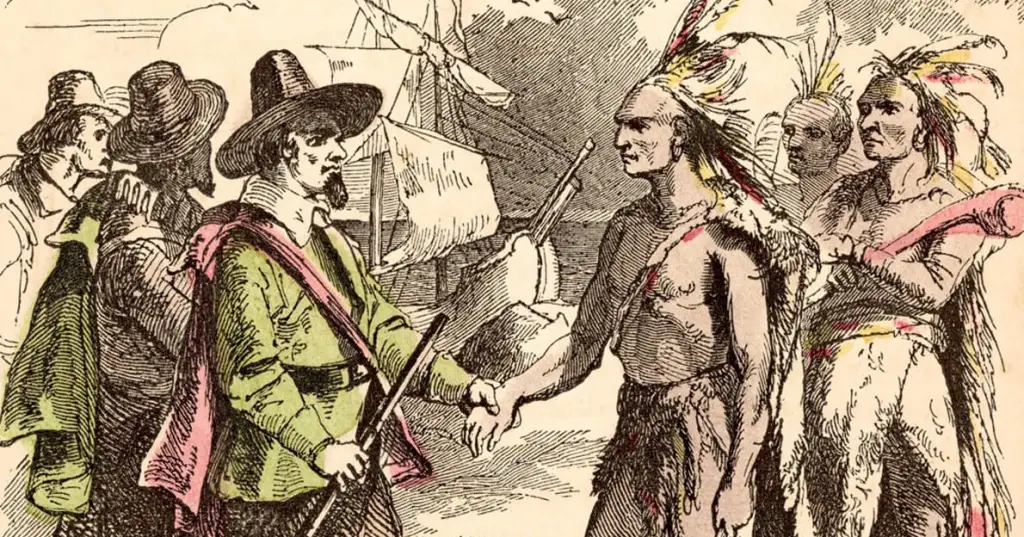In the heart of Arizona’s rugged landscape lies the rich and resilient history of the Yavapai-Prescott Indian Tribe. This tribe’s narrative is a fascinating tapestry of survival, cultural vibrancy, and unwavering spirit.
The History of the Yavapai-Prescott Indian Tribe is a journey through time, highlighting their profound connection to the land, their enduring traditions, and the challenges they’ve faced and overcome.
Discover what we have in store! Visit our product page now for exclusive deals and must-have items. Don't miss out!

This article aims to illuminate their past, celebrate their present, and look towards their future with a lens of respect and understanding.
Origins and Ancestral Lands
The story of the Yavapai-Prescott Indian Tribe begins with their ancestral roots. Deeply intertwined with the land of central Arizona, their history is a testament to the rich cultural and spiritual relationship they’ve maintained with their environment.
The tribe’s origins are not just a point in history but a continuing influence that shapes their identity and way of life.
The Dawn of the Yavapai-Prescott: Early History and Ancestral Roots
Tracing back to the ancient peoples of the Southwest, the Yavapai-Prescott’s history is rich with legends, oral traditions, and a deep connection to the land.
Their lineage passed down through generations, speaks of resilience and adaptation, painting a vivid picture of their early life and societal structure.
Homelands Defined: Geographical Expanse and Natural Resources
The ancestral lands of the Yavapai-Prescott stretched across diverse landscapes in central Arizona. These lands were more than just a habitat; they were an integral part of the tribe’s identity, providing both physical sustenance and spiritual nourishment.
The tribe’s deep understanding and respect for their environment played a crucial role in their survival and cultural development.
Culture and Society
The culture and society of the Yavapai-Prescott Indian Tribe are rich tapestries woven with traditions, beliefs, and communal values. Central to their societal structure is a strong emphasis on family and community, fostering deep bonds and a sense of collective responsibility.
Spiritually, their practices and beliefs are deeply rooted in a connection to the natural world, with mythologies and rituals that reflect their understanding of the universe. Artistically, the tribe expresses its heritage through music, dance, and visual arts, which are not only forms of creative expression but also vital means of preserving and transmitting their cultural legacy.
The Yavapai-Prescott language and oral traditions play a crucial role in maintaining their cultural identity, serving as living vessels of their history and wisdom. This vibrant social and cultural fabric underscores the tribe’s enduring resilience and the richness of their heritage.
Social Fabric: Family Structure and Community Life
At the core of Yavapai-Prescott society was a robust communal system. Families and extended kinships formed the backbone of the community, fostering a culture of mutual support and collective responsibility.
This social structure was pivotal in maintaining the tribe’s cultural integrity and resilience through various challenges.
Spiritual Beliefs: Religion and Mythology
Spirituality played a central role in the life of the Yavapai-Prescott people. Their religious beliefs and mythologies were intricately tied to the natural world, shaping their worldview and guiding their daily lives. These beliefs were not merely religious practices but a comprehensive way of understanding and interacting with the world around them.
The Yavapai-Prescott tribe expressed their history, beliefs, and emotions through vibrant artistic forms. Music, dance, and visual arts were not just forms of entertainment but crucial means of preserving their heritage and conveying their cultural narratives. These artistic traditions continue to play a vital role in the tribe’s cultural preservation and expression.
Language and Oral Traditions: Preserving the Yavapai-Prescott Voice
Language and oral tradition were the heartbeats of Yavapai-Prescott culture. Their language, a vessel of their history and wisdom, was key to maintaining their cultural identity.
The oral traditions, encompassing stories, legends, and teachings, were essential in passing down knowledge and values from one generation to the next.
Historical Milestones
The historical journey of the Yavapai-Prescott Indian Tribe is marked by significant milestones that have shaped their identity and destiny. Key moments include early interactions with European settlers, which introduced profound changes, and conflicts during the westward expansion of the United States, which tested their resilience.
The tribe’s history is also characterized by their struggle for land rights and sovereignty, highlighting their persistence in the face of adversity. These pivotal events not only reflect the tribe’s enduring spirit but also illustrate their capacity for adaptation and survival amidst the ever-changing landscape of American history.
First Contacts: Early Interactions with Other Tribes and Europeans
The Yavapai-Prescott’s first interactions with other tribes and European settlers were pivotal in shaping their history.
These encounters, ranging from peaceful trade to conflict, marked significant shifts in their way of life and their relationships with neighboring communities.
Turbulent Times: Conflicts and Battles
The tribe faced numerous challenges and conflicts throughout its history, particularly during the periods of European colonization and westward expansion of the United States.
These turbulent times tested the tribe’s resilience and resourcefulness, leading to significant changes in their social and political structures.
Resilience in Adversity: Survival Strategies and Adaptations
Despite facing numerous challenges, the Yavapai-Prescott Tribe demonstrated remarkable resilience and adaptability.
Their survival strategies, whether through negotiation, adaptation, or resistance, reveal a deep-seated strength and a profound commitment to preserving their culture and identity.
Political and Economic Developments
The political and economic landscape of the Yavapai-Prescott Indian Tribe has undergone significant transformations over time. Politically, the tribe has evolved a governance system that blends traditional leadership with contemporary organizational structures, allowing them to effectively manage their affairs and advocate for their rights.
Economically, they have diversified their activities, embracing modern business practices while preserving their cultural values. This includes managing land resources, engaging in various business ventures, and navigating legal agreements to sustain their community’s prosperity.
These developments reflect the tribe’s ability to adapt to changing times while steadfastly upholding their sovereignty and cultural integrity.
Leadership and Governance: Chiefs and Tribal Councils
The tribe’s governance structure, centered around chiefs and tribal councils, has played a crucial role in their political organization and decision-making processes.
This leadership structure has been instrumental in navigating the tribe through various historical and contemporary challenges.
Trade and Economy: From Barter to Modern Commerce
The economic practices of the Yavapai-Prescott tribe have evolved from traditional bartering systems to participation in modern commerce.
This economic transformation has been crucial in maintaining the tribe’s autonomy and supporting their community’s needs.
Land Rights and Treaties: A History of Negotiations and Agreements
The struggle for land rights and treaty negotiations has been a central aspect of the Yavapai-Prescott Tribe’s history.
These negotiations, often fraught with challenges, have been critical in defining the tribe’s relationship with the federal government and in securing their rights to their ancestral lands.
Modern Era and Contemporary Issues
In the modern era, the Yavapai-Prescott Indian Tribe faces a unique set of challenges and opportunities. As they navigate the complexities of contemporary society, the tribe works to preserve their rich cultural heritage while adapting to new realities. Issues such as economic development, educational advancement, and healthcare improvements are at the forefront of their agenda.
Additionally, the tribe continues to advocate for their rights and recognition, striving to maintain their sovereignty and cultural identity in an ever-evolving world.
This period is marked by a balancing act between honoring traditional values and embracing the opportunities of the 21st century, illustrating the tribe’s resilience and dynamic adaptability.
The Twentieth Century: Changes and Challenges
The twentieth century was a period of significant change for the Yavapai-Prescott Tribe. Confronted with modernization and changing political landscapes, the tribe adapted to new realities while striving to maintain their cultural and social traditions.
In contemporary times, the tribe has focused on improving education, employment opportunities, and healthcare for its members. These efforts are aimed at ensuring the well-being and prosperity of the community while preserving their cultural identity.
Political Activism: Struggles for Rights and Recognition
The Yavapai-Prescott Tribe has been actively involved in political activism, advocating for their rights and recognition.

This activism is not just about securing political and legal rights but also about raising awareness and understanding of their history and cultural heritage.
Preserving Heritage and Promoting Future
The preservation of cultural heritage and the promotion of a sustainable future are key priorities for the Yavapai-Prescott Indian Tribe.
From language revitalization to youth engagement, these efforts are crucial in ensuring the tribe’s legacy continues for generations to come.
Cultural Revival: Efforts in Language and Tradition Preservation
The tribe has undertaken significant efforts to revive and preserve their language and traditions. These initiatives are crucial in keeping their cultural heritage alive and fostering a sense of identity and belonging among the tribe’s members.
Engaging the youth in cultural and community activities is essential for the tribe’s future. By involving younger generations in the preservation of their heritage and in shaping the tribe’s vision, the Yavapai-Prescott are ensuring a vibrant and dynamic future for their community.
Interaction with Wider Society
The Yavapai-Prescott Indian Tribe’s interactions with the wider society, including the U.S. government and the general public, have been complex and evolving.

These interactions have shaped the tribe’s social, political, and economic landscape in significant ways.
Relations with the U.S. Government: Policies and Impacts
The tribe’s relationship with the U.S. government has been marked by various policies and treaties, impacting their sovereignty and way of life.
Understanding these dynamics is crucial in comprehending the tribe’s contemporary position and ongoing challenges.
Tourism and Cultural Exchange: Promoting Understanding and Respect
Tourism and cultural exchanges have provided opportunities for the Yavapai-Prescott Tribe to share their heritage and foster understanding and respect with the wider community.
These interactions not only promote cultural awareness but also support the tribe’s economic development, striking a balance between preserving their heritage and engaging with the modern world.
FAQs
Before concluding, it’s essential to address some frequently asked questions that provide deeper insights into the Yavapai-Prescott Indian Tribe’s history and current standing.
What are the major historical events that shaped the Yavapai-Prescott Tribe?
The tribe’s history has been shaped by several key events, including early encounters with Europeans, conflicts during the westward expansion of the United States, and the struggle for land rights and sovereignty.
How has the Yavapai-Prescott Tribe contributed to broader American culture?
The tribe has enriched American culture through their unique traditions, art, and stories, offering a perspective that highlights the diversity and richness of Native American heritage.
What challenges does the Yavapai-Prescott Tribe face today?
Contemporary challenges include maintaining cultural identity, ensuring economic stability, and advocating for political and legal rights in a rapidly changing world.
How can individuals support and learn more about the Yavapai-Prescott Tribe?
Support can come through educating oneself about the tribe’s history, participating in cultural events, and respecting their rights and traditions.
Conclusion
The journey of the Yavapai-Prescott Indian Tribe is a narrative of resilience, adaptability, and unwavering spirit. From their ancestral roots to the modern era, their story is a vivid reminder of the enduring strength of culture and community.
As we look back on their history, we gain not only knowledge but also a profound respect for people who have navigated the tides of time with grace and fortitude. The legacy of the Yavapai-Prescott Indian Tribe continues to echo through the ages, a testament to the enduring spirit of a remarkable community.



Leave a Comment
You must be logged in to post a comment.